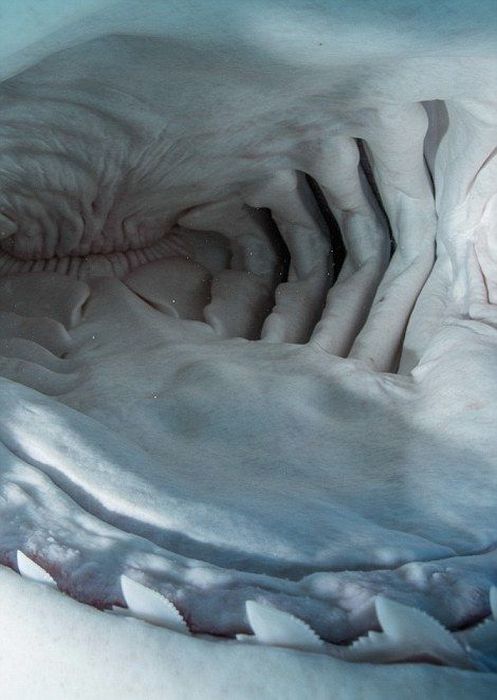|
|
Shark Mouth Close-up
|
Shark teeth are embedded in the gums rather than directly affixed to the jaw, and are constantly replaced throughout life. Multiple rows of replacement teeth grow in a groove on the inside of the jaw and steadily move forward as in a "conveyor belt"; some sharks lose 30,000 or more teeth in their lifetime. The rate of tooth replacement varies from once every 8–10 days to several months. In most species teeth are replaced one at a time, except in cookiecutter sharks the entire row of teeth is replaced simultaneously.
Tooth shape depends on diet: sharks that feed on mollusks and crustaceans have dense flattened teeth for crushing, those that feed on fish have needle-like teeth for gripping, and those that feed on larger prey such as mammals have pointed lower teeth for gripping and triangular upper teeth with serrated edges for cutting. The teeth of plankton-feeders such as the basking shark are smaller and non-functional.
• Skeleton
Shark skeletons are very different from those of bony fish and terrestrial vertebrates. Sharks and other cartilaginous fish (skates and rays) have skeletons made of cartilage and connective tissue. Cartilage is flexible and durable, yet has about half the density of bone. This reduces the skeleton’s weight, saving energy. Sharks have no rib cage and therefore on land a shark's own weight can crush it.
|
|









